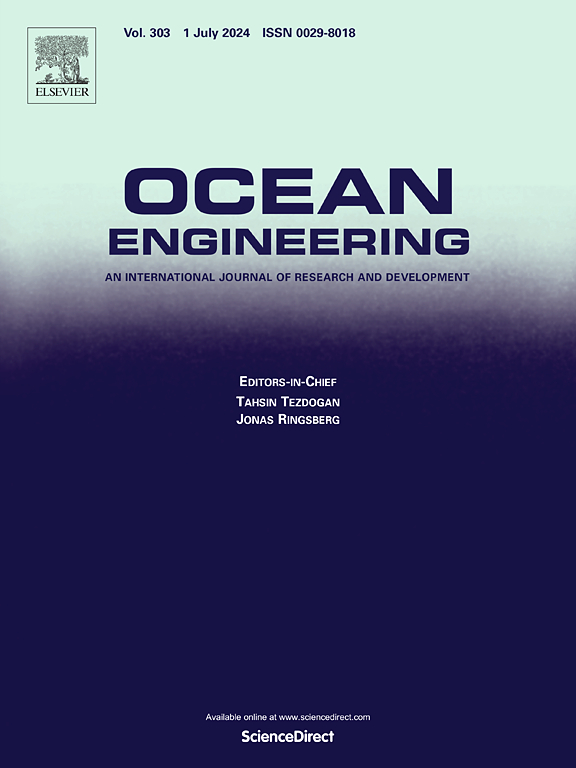Mixing mechanisms of hydrogen-blended natural gas in subsea pipelines: Effects of injection angles
IF 4.6
2区 工程技术
Q1 ENGINEERING, CIVIL
引用次数: 0
Abstract
The global transition toward renewable energy has made hydrogen blending in natural gas pipelines a promising approach for reducing carbon emissions. Nevertheless, the considerable dissimilarities in the gaseous characteristics of hydrogen and methane present considerable challenges for the efficient mixing and transportation of these substances, particularly in the context of submarine pipeline systems. This study investigates the impact of varying hydrogen injection angles (45°, 90°, and 135°) on mixing efficiency and pressure loss in hydrogen-natural gas pipelines. Using numerical simulations, we analyzed the coefficient of variation (COV) to quantify mixing uniformity and calculated the pressure drops associated with each configuration. Results indicate that a 135° injection angle significantly enhances mixing at higher flow velocities, creating counter-vortices that improve hydrogen dispersion within the methane stream. Conversely, vertical injection (90°) is most effective under low-speed conditions due to favorable flow dynamics that promote thorough mixing with minimal stratification. Mixing intensity improves as the flow rate increases, although stratification becomes more pronounced, especially at lower angles. The study concludes that injection angle and flow rate are critical factors in achieving optimal hydrogen blending within natural gas pipelines. Findings provide valuable insights into subsea pipeline design and operational strategies for hydrogen blending, supporting the broader goal of integrating hydrogen into existing gas infrastructure as part of the global carbon reduction initiative.

海底管道中氢气混合天然气的混合机制:注入角度的影响
全球向可再生能源的过渡使得天然气管道中的氢混合成为减少碳排放的有希望的方法。然而,氢气和甲烷气体特性的巨大差异对这些物质的有效混合和运输提出了相当大的挑战,特别是在海底管道系统的情况下。本研究考察了不同的注氢角度(45°、90°和135°)对氢-天然气管道混合效率和压力损失的影响。通过数值模拟,分析了混合均匀性的变异系数(COV),并计算了不同构型下的压降。结果表明,135°喷射角显著增强了高流速下的混合,产生了反涡,改善了甲烷流中氢气的分散。相反,垂直注入(90°)在低速条件下是最有效的,因为有利的流动动力学促进了彻底的混合和最小的分层。混合强度随着流速的增加而提高,尽管分层变得更加明显,特别是在较低的角度。研究表明,注入角度和流量是实现天然气管道内最佳配氢的关键因素。研究结果为海底管道设计和氢气混合操作策略提供了有价值的见解,支持将氢气整合到现有天然气基础设施中作为全球减碳倡议的一部分的更广泛目标。
本文章由计算机程序翻译,如有差异,请以英文原文为准。
求助全文
约1分钟内获得全文
求助全文
来源期刊

Ocean Engineering
工程技术-工程:大洋
CiteScore
7.30
自引率
34.00%
发文量
2379
审稿时长
8.1 months
期刊介绍:
Ocean Engineering provides a medium for the publication of original research and development work in the field of ocean engineering. Ocean Engineering seeks papers in the following topics.
 求助内容:
求助内容: 应助结果提醒方式:
应助结果提醒方式:


